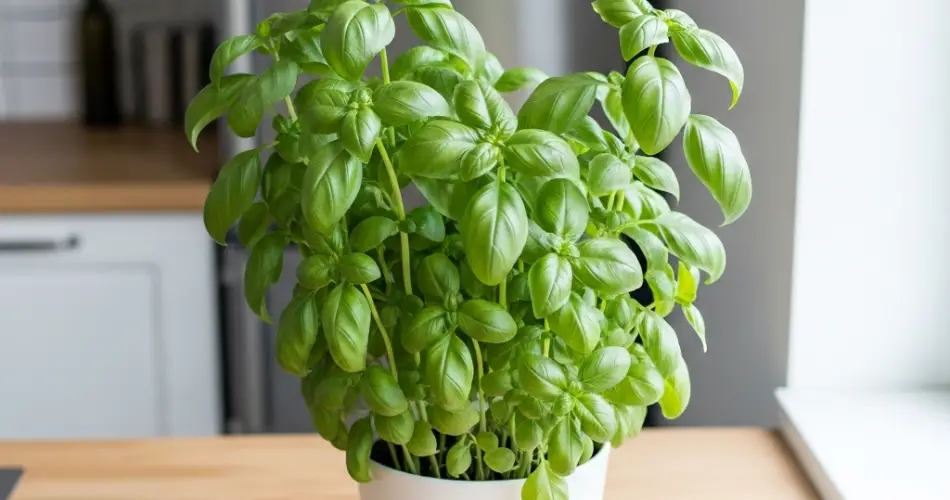Basil is best known as a fragrant culinary herb, a staple in everything from pesto to pasta sauces. But beyond its flavorful leaves, basil can also produce delicate, aromatic flowers—an often-overlooked feature that adds beauty and charm to your indoor or outdoor garden. With the right techniques, you can cultivate basil not only for its leaves but also for its vibrant blooms, all year long.
Whether you’re growing basil on a windowsill, balcony, or in the backyard, this guide will show you how to keep your basil healthy, bushy, and flowering continuously.
Understanding Basil’s Growth Cycle
Basil (Ocimum basilicum) is a fast-growing annual herb that loves warmth and sunlight. Most gardeners grow it for the leaves and pinch off the flowers to extend leaf production. But if you’re growing basil for both its leaves and blossoms, you’ll need to adjust your care methods slightly.
When basil begins to flower, its energy shifts from leaf production to seed development. While this can lead to a change in flavor—leaves become slightly bitter—it also means the plant is maturing and ready to display its small, often purple or white, blooms.
With consistent pruning, ideal conditions, and a bit of planning, you can keep your basil plants both blooming and leafing throughout the year.
Choosing the Right Basil Variety
Not all basil types flower the same way. Some are better suited for ornamental purposes, while others are slower to bolt (flower), making them more suitable for long-term harvesting.
Here are a few varieties to consider:
-
Genovese Basil: Classic Italian variety with large leaves and sweet aroma. It flowers readily if left unpruned.
-
Thai Basil: Produces striking purple stems and blossoms with a spicier, anise-like flavor.
-
Lemon Basil: Offers a citrusy fragrance and delicate white flowers.
-
Holy Basil (Tulsi): Grown more for its medicinal qualities, this type flowers abundantly and is ideal for ornamental gardens.
Mixing different varieties can enhance your garden’s visual appeal and extend the blooming season.
Ideal Growing Conditions
To encourage strong growth and regular blooming, basil needs the right environment.
1. Sunlight
Basil is a sun-loving plant. It needs at least 6–8 hours of direct sunlight per day. If growing indoors, place the plant near a south-facing window or under a grow light. Without enough light, basil becomes leggy and sparse.
2. Temperature
Basil thrives in warm temperatures between 20°C and 30°C (68°F to 86°F). Avoid exposure to cold drafts or sudden temperature drops. If temperatures dip below 10°C (50°F), bring the plant indoors.
3. Soil and Drainage
Use a light, well-draining potting mix enriched with compost. Basil dislikes soggy roots, so ensure containers have proper drainage holes.
4. Watering
Water basil regularly, keeping the soil evenly moist but not waterlogged. Inconsistent watering can stress the plant and reduce flowering. During hot months or when growing indoors with heating, increase humidity by misting or placing a water tray nearby.
Pruning for Blooms and Bushiness
To maintain a healthy, blooming basil plant, regular pruning is essential. Here’s how:
-
Pinch Early: When plants reach about 6 inches tall, pinch off the top two sets of leaves. This encourages lateral branching and a bushier shape.
-
Allow Controlled Flowering: Instead of removing all buds, let a few develop while continuing to prune others. This keeps the plant in balance—producing both leaves and blossoms.
-
Harvest Often: Frequent leaf harvesting acts like pruning. Cut above a pair of leaves to promote new growth. Don’t strip the plant entirely; always leave enough leaves for photosynthesis.
-
Deadhead Old Blooms: Remove faded flowers to encourage continuous blooming and prevent seed formation, which can signal the plant to slow down.
Feeding for Continuous Blooms
Basil is a moderately heavy feeder, especially when grown in containers. Use a balanced liquid fertilizer (like 10-10-10) every 2–4 weeks. For more flowers, switch to a bloom-boosting formula (low nitrogen, higher phosphorus and potassium) during peak growing periods.
Organic options like compost tea, diluted fish emulsion, or worm castings also work well and improve overall soil health.
Year-Round Growing Tips
To enjoy basil year-round, especially in cooler climates:
-
Grow Indoors: Transfer basil to pots before the first frost. Indoor basil needs bright light and steady warmth to thrive.
-
Succession Planting: Start new seeds every 6–8 weeks to maintain a fresh crop and continuous blooms.
-
Overwintering Cuttings: Take stem cuttings before winter and root them in water. Once rooted, plant in containers and grow indoors.
Final Thoughts
Basil is more than just a kitchen herb—it’s a fast-growing, flowering plant that can add beauty and fragrance to your home or garden year-round. With the right balance of pruning, feeding, and light, you can enjoy lush foliage and vibrant blossoms in every season.
Growing basil for blooms is simple, rewarding, and a great way to make your garden thrive with color and aroma—all from one humble herb.



